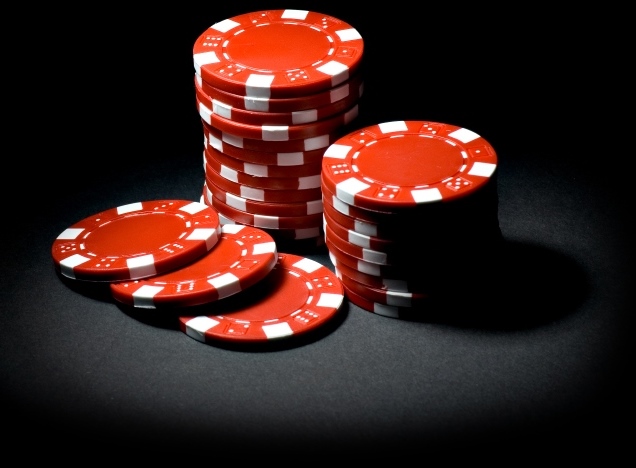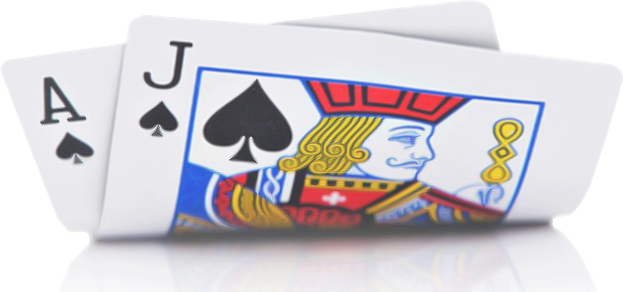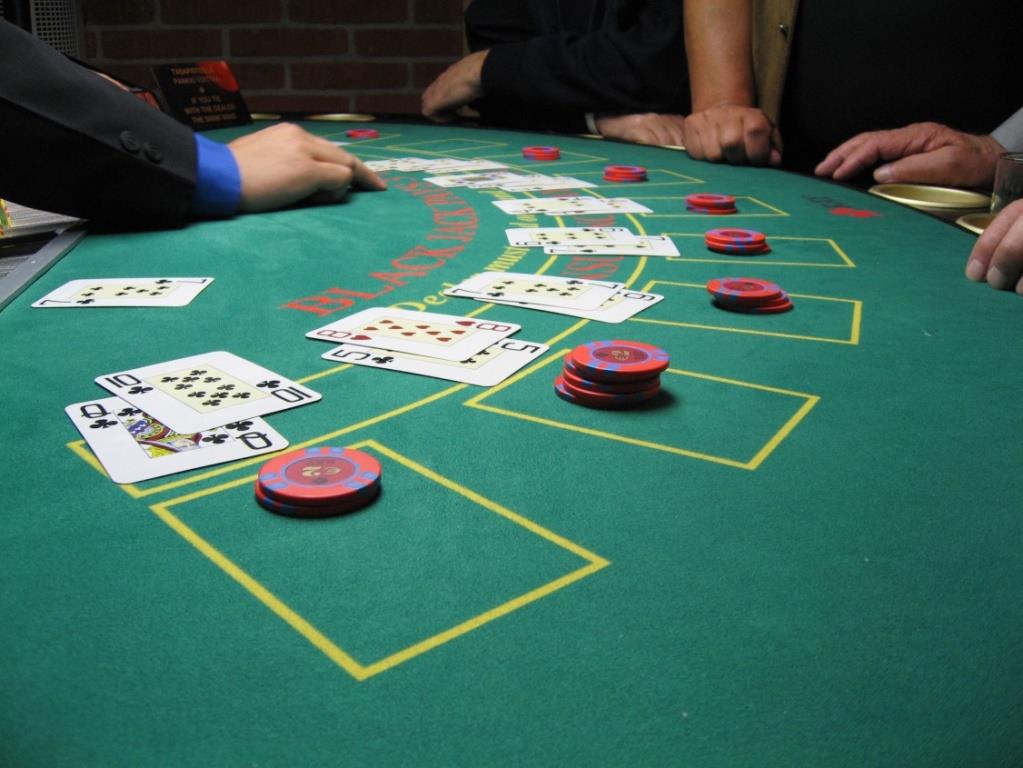- The Reviews
- UNIBET Review 2025
- MANSION Review 2025
- BETSAFE Review 2025
- BWIN Review 2025
- BETSSON Review 2025
- JETBULL Review 2025
- WILLIAM HILL Review 2025
- BET-AT-HOME Review 2025
- ZET Casino Review 2025
- CASINO.com Review 2025
- Mr GREEN Review 2025
- 888 Review 2025
- VEGAS CASINO ONLINE Review 2025
- LAS-VEGAS USA Casino Review 2025
- SUN PALACE Casino Review 2025
- ROYAL ACE Casino Review 2025
- PLANET 7 Casino Review 2025
- CLUB WORLD Casino Review 2025
- SILVER OAK Casino Review 2025
- Free Casino Games
US
- Best Online Casino Games Guide
- Choose Your Best Online Casino
- The Best Casino Games
- Online Card Games
- Best Online Machine Games
- Table Games
- Online Slots
- Complete Modern Online Blackjack Guide
- Free Blackjack Basic Strategy
- Simplified Blackjack Playing Strategy
- How to Play Blackjack Online Like Pros
- Advanced Blackjack Rules and Strategy
- Step-by-Step Blackjack Playing Procedures
- Blackjack Playing Options Guide
- Master Blackjack Card Counting
- Modern Blackjack Card Counters Challenge
- Which is the Best Blackjack Betting System?
- Nine-Count Blackjack Strategy Review
- Blackjack Myths and Errors
- Online Roulette
- Sportsbook
- Online Poker
- Online Video Poker
- Online Scratch Cards
- Online Bingo
- Online Baccarat
- Online Craps
- Asian Casino Games
- Online Keno
- Online Sic Bo
- Casino Bonuses
- Online Casino Reviews
- UNIBET Review, Casino, Sportsbook, Poker & Live Dealers
- BETSAFE Review, Casino, Poker, Live Dealers & Sportsbook
- MANSION Review, Casino, Sportsbook & Live Dealers
- BWIN Review, Sportsbook, Casino, Poker & Live Dealers
- BETSSON Review, Sportsbook, Casino, Live Dealers, Poker
- JETBULL Review -Casino, Sportsbook, Live Dealers
- BET_AT_HOME Review, Sportsbook, Casino, Poker, Live Dealers
- WILLIAM HILL Review -Casino, Sportsbook, Live Dealers, Poker
- ZET Casino Review
- Mr GREEN Review -Casino, Sportsbook & Live Dealers
- CASINO.com Review -Online Casino & Live Dealers
- Las-Vegas USA Casino Review
- Sun Palace Casino Review
- Royal Ace Casino Review
- Planet 7 Casino Review
- Club World Casino Review
- Vegas Casino Online Review
- Silver Oak Casino Review
- Free Casino Games
Modern Blackjack Card Counters Challenge (2025)
Blackjack card counters did not always existץ Casinos did not know their actual edge over the players in blackjack even as late as the 1930s. A blackjack book by Joe Treybal Handbook on Percentages, published in 1930, has some very vague and mostly inaccurate statistics about blackjack. Blackjack card counters started!
This is quite understandable as blackjack did not develop a more standardized set of rules until after World War II. In the 1930s, some clubs paid bonuses for 21 totals made up of certain cards such as a 6, 7, and 8 of the same suit, three 7s and seven-card totals of 21, to name just a few of the variations.
In the early 1950s four U.S. soldiers, Roger Baldwin, Wilbert Cantery, Herbert Maisel and James McDermott, defined a “correct” way to play blackjack. Using only simple desk calculators, they examined every play option at blackjack and came up with a suggested playing strategy.
They published the article “The Optimum Strategy in Blackjack” in 1956 which became the basis for today’s basic strategy play. This group had developed for the first time a reasonably accurate strategy that allowed the player to play even with the house. This event marked the beginning of the systematic study of blackjack.
Our Favorites Online Casinos
- Bonus Amount: $3,000 up to $10,000. The best daily bonuses on the internet.
- Games: An incredible number of slots, table games, and video pokers, including HTML5 games.
- Strong security protocols of 128-bit encryption
- Audited and guaranteed fair by TST
- Website: https://www.lasvegasusa.eu/casino/
- Established: 1999
- Software: Real Time Gaming (RTG)
- US and Canadians players supported
- Platforms Supported: Windows, Mac, iPhone, iPad, & Android.
- Type of Casino: Online & Instant or download.
- Free Slots Games: Yes
- Customer Support: 24/7 live chat support, as well as a toll-free phone number: +506-283-0061, and e-mail support
Write your review of Las-Vegas USA Casino
- Website: http://www.royalacecasino.eu
- Casino Type: download client, instant play, and mobile
- Software: Real Time Gaming (RTG)
- Owner: Emoney Processing Casinos LTD
- Established: 2009
- Casino Promotion: 100% Match Deposit Bonus up to $4,000, Daily and Weekly Bonuses
- Coupon Code: CASINO400
- Currencies: US$, Euros, Yen, Pounds, Bitcoin
- Mobile: both desktop and mobile compatibility
- VIP Program: 5 levels Available
- Support: World Class Support, 24/7 live chat & Toll-free phone number for USA and Canada
- Security: 128-bit SSL encryption
- Certified by: CDS (Central Disputes System)
- Languages: English
- License: Costa Rica
Write your review of Royal Ace Casino
- Bonus: 400% up to $10,000.
- Website: https://www.sunpalacecasino.eu/
- Software: Real Time Gaming (RTG)
- Deposit Methods: ClickandBuy, MasterCard, Money Order, Neteller, Visa Electron, instaDebit, Visa, MST Gift Card, Skrill, Bitcoin
- Withdrawal Methods: ACH, Cheque, Money Order, Neteller, Skrill
- Withdrawal Times: EWallets: 2-5 days, Credit / Debit Cards: 10-12 days, Bank Transfers: 7-12 days, Cheques: 21-28 days
- Pending Time: 3-7 days
- Withdrawal Limit: $5,000 per week
- Games: Incredible number of games of all types
- support: 24/7 through live chat, phone, or e-mail
- Support Response Time: 24 hours via email or Instant using Live Chat.
- Encryption: 128-bit SSL
- Audited and found fair by TST
- Languages: English.
- Progressive Jackpots: up to Million-Dollar.
- Restricted Countries: Bosnia, Costa Rica, Malaysia, Morocco, Netherlands, Russia.
Write a review of Sun Palace Casino
- Bonus: 320% Bonus + 45 Free Spins
- Casino Website: https://www.silveroakcasino.com/
- Casino Promotion: 320% Match Deposit Bonus up to $10,000 in 10 first deposits, up to $100 No Deposit Bonus, Weekly and Monthly Cashback, and much more.
- Casino Type: download client, instant play, mobile, and live dealers
- Software: Real Time Gaming (RTG)
- Live Casino: Available Live Dealers Casino
- Owner: Emoney Processing Casinos LTD
- Established: 2009
- Currencies: US$, Euros, Yen, Pounds, Bitcoin
- Mobile: both desktop and mobile compatibility
- VIP Program: 5 levels Available
- Support: World Class Support, 24/7 live chat & Toll-free phone number for USA and Canada
- Security: 128-bit SSL encryption
- Certified by: CDS (Central Disputes System)
- Languages: English
- License: Costa Rica
Write your review of Silver Oak Casino
- Bonus: First Deposit 350% Bonus + 25 Free Spins
- Website: https://www.planet7casino.com/
- Casino Type: download client, instant play, mobile, and live dealers
- Software: Real Time Gaming (RTG)
- Live Casino: Available Live Dealers Casino
- Owner: Emoney Processing Casinos LTD
- Established: 2008
- Casino Promotion: 200% Match Deposit Bonus up to $4,000, and much more.
- Currencies: US$, Euros, Yen, British Pounds, Bitcoin
- Mobile: both desktop and mobile compatibility
- VIP Program: Available
- Support: World Class Support, 24/7 live chat & Toll-free phone number for USA and Canada
- Security: 256-bit SSL encryption
- Certified by: CDS (Central Disputes System)
- Languages: English
- License: Costa Rica, Cyprus, the United Kingdom, and the Netherlands.
Write a review of Planet 7 Casino
- Bonus: Get 300% Match up to $3000 FREE Welcome Bonus
- Website: https://www.clubworldcasinos.com
- Software: Real Time Gaming (RTG)
- Mobile: Android, iPhone, iPad
- Casino Type: Download, Instant Play, Mobile
- Currency: US dollars
- Language: English
- License: Curacao
- Owner: Club World Casinos Group Casinos
- Established: 2005
- Audit: RTP Not publicly audited
- Currency: US dollars
Write a review of Club World Casino
- Bonus: Get 300% Match up to $3000 FREE Welcome Bonus
- Website: https://vegascasinoonline.eu/
- Established: 1999
- Software: Real Time Gaming (RTG)
- Currencies: US$
- US and Canadians players: supported
- Bonus Amount: up to $11,000 Match Bonus
- Platforms Supported: Windows, Mac, iPhone, iPad, & Android.
- Type of Casino: Download & Online Instant Play.
- Free Slots Games: Yes
- Owner: Main Street Vegas Group Casinos
- License: Costa Rica
- US Customer Support: (877) 691-5124
- Canada Customer Support: (888) 387-6717
- Email Address: [email protected]
- Live Chat: Yes
- Response Time: 24 hours via email or Instant using Live Chat.
- Languages: English.
- Progressive Jackpots: up to 1 Million-Dollar.
Write a review of Vegas Casino Online
The Blackjack Card Counters
A professor at New Mexico State University, Edward O. Thorp, followed the Baldwin study by developing a computer program that would analyze the composition of the remaining cards after certain cards were removed during play.
Thorp discovered that the player could gain an advantage over the casino after certain cards had been removed from play. Thorp published his findings in the famous Beat the Dealer, published in 1962.
Thorp’s new basic strategy was good enough to eliminate any house advantage at all, allowing the basic strategy player to gain an edge over the house. By using this basic strategy with several card counting systems that Thorp developed, a player could gain a significant edge over any single-deck game in Las Vegas. Blackjack was changed forever.
The way blackjack was played before Thorp’s publication had many liberal rules favoring the player. The house dealt from a single deck and the cards were handheld. Many times, every card was put into play. This would allow a counter to know the exact composition of the remaining cards in the deck and be able to make considerable money using this knowledge in skillful end play. Players were allowed to double down on any two cards, split Aces repeatedly, and take as many cards on split Aces as they wanted. Some casinos offered bonuses in addition to the 3 to 2 payoff for player blackjacks. Some casinos paid higher bonuses for blackjacks.
Bonuses or automatic wins were offered for a player drawing more than a specified number of cards without busting, and many casinos offered generous surrender options. Casinos also had to put up with cheats who would mark the cards or switch their own cards into the game. Players were allowed to handle their own cards and to scrape the table surface when a hit was desired.
Overall, the casinos were racking in large profits from blackjack. Only a small group of players had the skill to take advantage of the casinos’ liberal rules. The average person did not understand the game well enough to win very often, and as yet there was not a consensus on the correct playing strategy.
Thorp’s book hit the casino bosses like a bombshell. They had visions of armies of card counters, armed with the knowledge imparted by Dr. Thorp, invading the casinos and cleaning up at the blackjack tables. The obvious defenses were to shuffle cards more often, to eliminate end play and to change some of the more player favorable rules.
Still, the bosses were not satisfied that the threat was contained. On April 1, 1964, the bosses acted yet again. The Las Vegas Resort Hotel Association announced that two major rules of blackjack were being changed.
Aces could no longer be split and doubling down was restricted to hard 11s only. The blackjack playing public had had enough. They reacted by staying away from the blackjack tables in droves.
Blackjack revenues plummeted. Dealers were upset over the drastic rule changes because the major source of their income, tips, had disappeared. Within a couple of weeks, the casinos caved in to the pressure and abandoned these two rule changes.
However, the casinos were not finished with changing the game of blackjack.
Multiple deck games were introduced which devastated the blackjack card counters’ chances of winning. With multiple decks used, the number of cards seen by the counters was reduced. In addition, a new cutting procedure was used with the plastic insert card inserted cutting off the last one quarter to one-third of the cards from being dealt with.
This virtually eliminated the profit from the end play. The combination of multiple decks and a large number of unseen cards effectively reduced the significance of the running count used by card counters.
Many casinos eventually terminated the player’s ability to double down on any two cards and restricted them to doubling on tens and elevens only. Many casinos also removed the surrender options as well as the bonus payoffs for different hands as previously discussed.
Following Thorp, the correct playing strategy was refined even more. Most notably, Julian Braun of IBM developed computer software that played every possible blackjack hand randomly against every possible dealer up-card for millions of hands.
He then compared the different rule changes with how they affected the outcome of different hands. By extensively analyzing his results. Braun came up with a very accurate playing strategy with variations for each change in playing rules. Thus, different playing strategies were developed for single-deck games versus multiple deck games and for different casino rules, such as the rule regarding whether a dealer would hit or stand with a soft 17.
Braun’s work formed the basis for virtually every card counting system which has arisen since then (including the Power Blackjack Playing Strategy).
In 1970, Lawrence Revere published Playing Blackjack as a Business and presented a simplified card counting system as well as easy to read basic strategy charts. His count, called the High-Low count, is still popular and is used by card counters.
Blackjack Card Counter: Counting Systems
It takes about a week to learn the basic Blackjack strategy and another two days to learn how to count cards.
Thorp's Five-Count Strategy
Using a computer to analyze millions of different possible blackjack situations, Edward Thorp showed that the removal of all four 5s from a single deck of cards improved the player’s chance of winning and would give the player an edge over the casino of 3.6%.
He developed a Five-count Strategy to track the number of fives remaining undealt. He suggested using Basic Strategy until all four 5s had been dealt and then he recommended a modified playing strategy.
As a modern counting strategy, the Five-count is not very effective. It loses its ability to predict player advantage in multi-deck games as the removal of a small number of cards has much less effect on the player’s chance of winning.
Also, the player must change the size of his bets too drastically to take advantage of rare situations when no 5s are left. Another drawback is that other players at the table can just as easily benefit. Finally, the Five-count offers no information about the other most important cards for the player, Tens and Aces.
Blackjack Card Counter: Thorp's Ten-count Strategy
Thorp also discovered that a deck with proportionately more 10-valued cards offered a greater advantage to the player and devised a count to keep track of tens. Since in every deck there are four times more 10-valued cards than cards of any other value, this allowed for much greater deviations from the norm when Ts were tracked instead of 5s. Such variations offered players the chance for even bigger advantages than the Five-count offered and Thorp’s Ten-count is a much more powerful strategy.
Another advantage of the Ten-count was that it would tell the player when it was advantageous to take insurance. However, like the Five-count, it ignored Aces forcing counters to keep separate track of them along with the number of 10-valued and non 10-valued cards, resulting in three different counts.
Besides juggling the different counts, the player also had to memorize complex implementation tables and perform complicated mathematical calculations in order to determine which values to use in the tables.
Although Thorp’s Ten-count strategy could still be used with single-deck games today, its calculations are simply beyond most players abilities, especially under real playing conditions.
Blackjack Card Counter: Thorp's Point-Count System
In his second edition of Beat the Dealer published in 1966, Thorp presented a point count system that has formed the basis for innumerable variations that have been developed since then. Harvey Dubner’s similar system appeared slightly before this publication and primarily utilized modifications of Thorp’s original presentation.
Using Braun’s sophisticated computer programs, Thorp determined that the player’s advantage was greatest when there were fewer small valued cards (2s, 3s, 4s, 5s, and 6s) left undealt, leaving relatively more 10-valued cards and Aces available. He logically concluded that the player’s advantage increased when the deck was “rich” in Tens and Aces.
Thorp’s original point count is still a relevant count today. The count works by assigning a value to each card and keeping a running count of the cards as they are dealt with. The low cards of 2s, 3s, 4s, 5s, and 6s are assigned values of +1 each, while 10-valued cards and Aces are valued as -1 each. The neutral cards of 7, 8 and 9 are simply ignored. By keeping a running total of cards as they are dealt, a counter can easily tell the composition of the remaining pool of undealt cards.
Modern Blackjack Card Counters
Using increasingly complex computer simulations, the trend throughout the 1980s was to create more complex counting systems. Some of these systems, such as Ken Uston’s Advanced Point Count System, assigned three different values to cards and were extremely difficult to use.
Most of the card counting strategies developed are balanced systems. With a balanced system, the total of all of the values assigned different cards will equal zero when all of the cards in a deck have been counted. Hi-Opt II is an example of a balanced count.
Values of +1 are assigned the cards 3, 4, 5 and 6 of which there are 16 per deck of cards. A value of -1 is assigned the 16 10-valued cards. Whenever a deck of cards has been counted using this system, the total will be zero if the count was done correctly. This is an example of a balanced count where the sum of the number of cards assigned positive values times the number of cards with positive values assigned is exactly equal to the sum of the values of cards with negative values times the number of cards with these values.
While keeping a running count with a system like Hi-Opt II may not be extremely difficult, the running count must be adjusted to the true count before a playing decision can be made. The true count can be roughly defined as the running count adjusted for the number of decks left to be dealt with.
If you think using a system like this under real conditions is challenging, you are right. Imagine doing the following with the dealer talking, the cocktail waitress jiggling, other players chatting, the floorman coming by to see if you want to be rated, with the constant background noise assorted with any modern casino – bells and clanging noises coming from the all-pervasive slot machines, screams from the craps pit, while your companion interrupts you to see if you are ready to go shopping.
Let’s assume you are playing in a six-deck game. Your running count is +8. It is time to make your bet, and the dealer is waiting for you. But before you can decide how much to wager and how to play your hand, your card counting system requires that you first convert the running count to a true count.
Without forgetting the running count total, you look at the stack of discarded cards and estimate that three and one-half decks have been played. Now you must subtract the number of decks played from the total number of decks dealt and divide the number of decks remaining to be dealt with by the total number of decks used. Got it?
Subtracting 3 1/2 from 6 gives you two decks left to be dealt with. Quickly now, the dealer is really getting impatient, divide your running count of +8 by 2.5 decks and round the total down. Did you get 3? Good. Now make your bet according to your true count of +3, but don’t forget your original running total of +8 because you must continue to use this total to count the cards as they are dealt.
After the dealer has dealt with each of the players two cards, you notice the dealer has an Ace showing. He asks if you want insurance? You must go through the calculations all over again, using your new running count total of +11. Whether you take insurance or decline it depends on the true count. You must be able to recall the exact playing strategy for dozens of hands, as the strategy changes, depending on the true count. Sometimes you will hit a hard 16 versus a dealer 10 and at other times you will stand on the hand.
Now, try to act naturally. The floor person has just asked you if you like to take insurance? What do you say? If you are using a multi-level system that incorporates more than one numeral for counting, things can really get exciting. Imagine using the Uston Advanced Point Count, with values of 1, 2 and 3 assigned to various cards.
Uh oh. You forgot your side count of Aces. Many counting systems require that you also keep a separate count of Aces. Some experts blithely suggest that you can use chips or the position of your feet to count Aces.
Let’s see, right foot in, one Ace; left foot out, two Aces; running count is -6; three and a quarter decks left to be played. Now decide. Do you split a pair of tens or stand with them. Wait, you forgot to adjust to the true count and what was that strategy variation you were supposed to memorize?
I forgot to mention one more detail. Most systems require that you learn over 200 strategy variations matched to different levels of true counts and adjusted because of the Ace side counts. This is why you must know the true count before you decide how to play your hand. Your playing strategy changes with the count.
Are you starting to understand why most players are not card counters?
Using this approach, it will not take you any time to compute your wager size because the system is greatly simplified. You won’t need to make any adjustments to your count. The only numbers you will use for counting are -1, 0 and +1. And your playing strategy will stay the same regardless of the count.
Casinos have made it extremely difficult for card counters. In addition, counters have to contend with a strategy that requires a huge bankroll and allows for huge fluctuations in the bankroll. I would not attempt to earn living counting cards with less than $250,000 as my permanent bankroll. I would have to be prepared to see the bankroll decline as much as $100,000 and still have faith in my system.
And, with card counting, I would have to be prepared to play on a daily basis, putting in many hours of play, as card counting only gains an advantage over long term play, and may not help at all in any individual session. Many persons believe that card counters always win. Just the opposite is true. A very advanced card counter might win 60% of his sessions, losing 40% of the time. In addition, the counter is faced with the possibility of long losing streaks. If you are a weekend player using a typical counting system, you might easily lose four weekends in a row.
It is hard not to become discouraged about card counting once you know the grim truth. If you become very proficient at counting, you may be asked to leave a casino, or even barred from playing there.
While the casinos have created a number of formidable obstacles for would-be card counters, their latest weapon may spell the end for card counting if its use becomes widespread.
Many casinos are now using a continuous shuffling machine (CSM). This machine is a device that randomly inserts discards back into the deck. When one is used, it is like playing against a freshly shuffled shoe every hand. Please don’t confuse this with the automatic shuffler used for shuffling the entire deck or shoe.
Most players don’t like the CSM, and at this time, it is mostly being used at tables with lower minimum wages, so as to not offend high rollers at the higher minimum wager tables. The effect of the CSM on card counting should be obvious. If a CSM is used, card counting is rendered totally ineffective.
In addition to eliminating any risk from card counters, using a CSM actually speeds up the game allowing more hands per hour. Since most players play at a disadvantage to the house, increasing the number of hands played per hour increases the house profit. You can begin to see why casino bosses like CSMs.
However, a computer simulation run on billions of hands showed that using a CSM actually lowers the house edge. This was true regardless of the number of decks used. Nine-Count Blackjack Strategy players have nothing to fear to play against CSMs.
Was This Helpful?
Recommend us on Facebook











